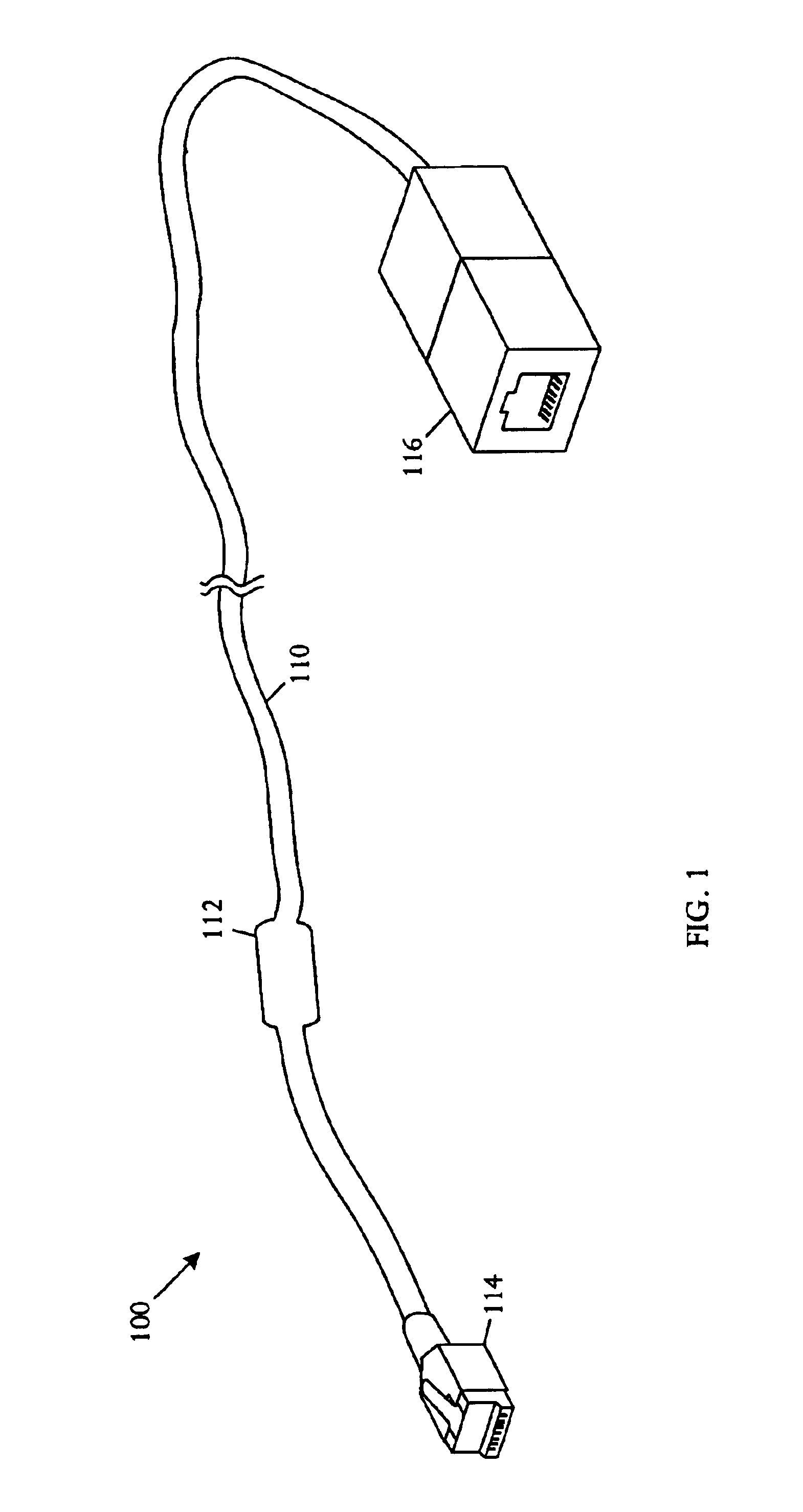Cable extension for reducing EMI emissions
a technology of emi and cable extension, which is applied in the direction of cables, insulated conductors, conductors, etc., can solve the problems of undesirable signals, emi can arise in any electronic system, and create problems in various systems
- Summary
- Abstract
- Description
- Claims
- Application Information
AI Technical Summary
Problems solved by technology
Method used
Image
Examples
Embodiment Construction
)
What is desired is an EMI solution that allows usage of an existing cable infrastructure while complying with global standards for radiated emissions.
A cable extension can be coupled between a communicating device and a communication cable to eliminate or substantially reduce radiated emissions. In specific embodiments a local area network (LAN) cable extension can be coupled between a LAN device and a LAN cable to control EMI emissions. The cable extension comprises a cable with a first connector capable of coupling proximal to the communicating device and a second connector capable of coupling to the communication cable. A filter encases or surrounds the cable at a position between the first and second connectors. A cable shield encases or surrounds the filter and the cable in vicinity not encased by the filter. The first connector is shielded and couples to the cable shield. The second connector is isolated from the cable shield. The extension cable can be any length that attenu...
PUM
| Property | Measurement | Unit |
|---|---|---|
| distance | aaaaa | aaaaa |
| distance | aaaaa | aaaaa |
| distance | aaaaa | aaaaa |
Abstract
Description
Claims
Application Information
 Login to View More
Login to View More - R&D
- Intellectual Property
- Life Sciences
- Materials
- Tech Scout
- Unparalleled Data Quality
- Higher Quality Content
- 60% Fewer Hallucinations
Browse by: Latest US Patents, China's latest patents, Technical Efficacy Thesaurus, Application Domain, Technology Topic, Popular Technical Reports.
© 2025 PatSnap. All rights reserved.Legal|Privacy policy|Modern Slavery Act Transparency Statement|Sitemap|About US| Contact US: help@patsnap.com



